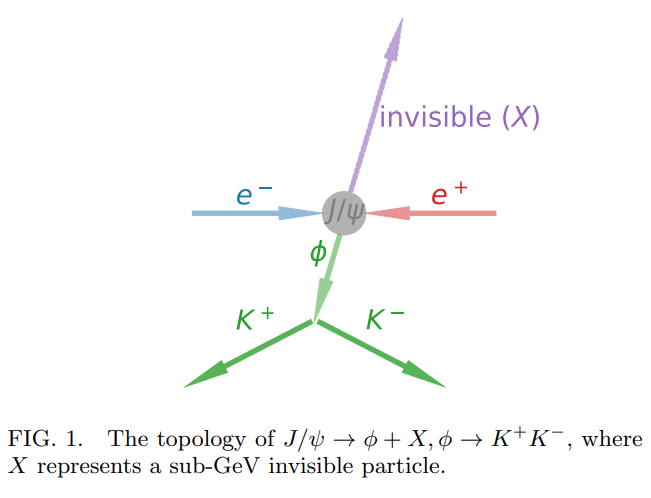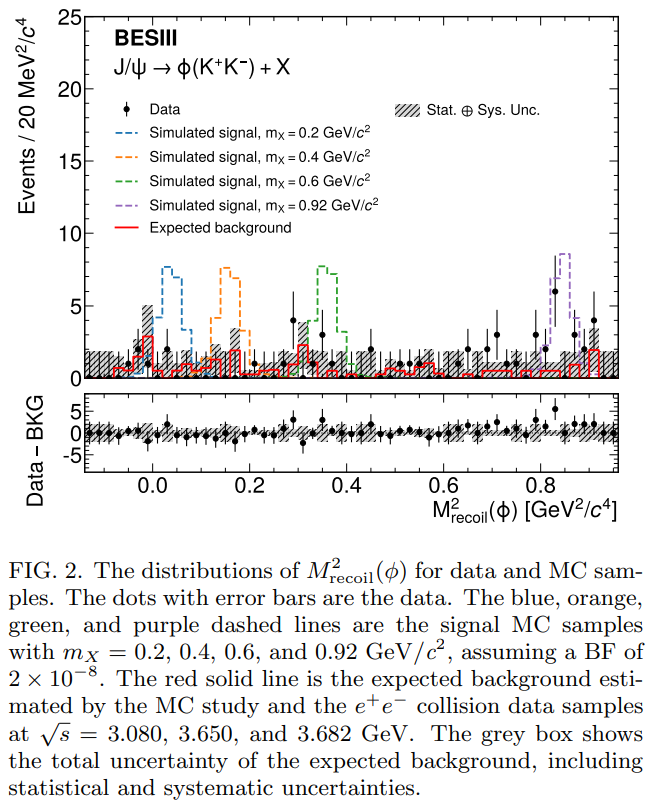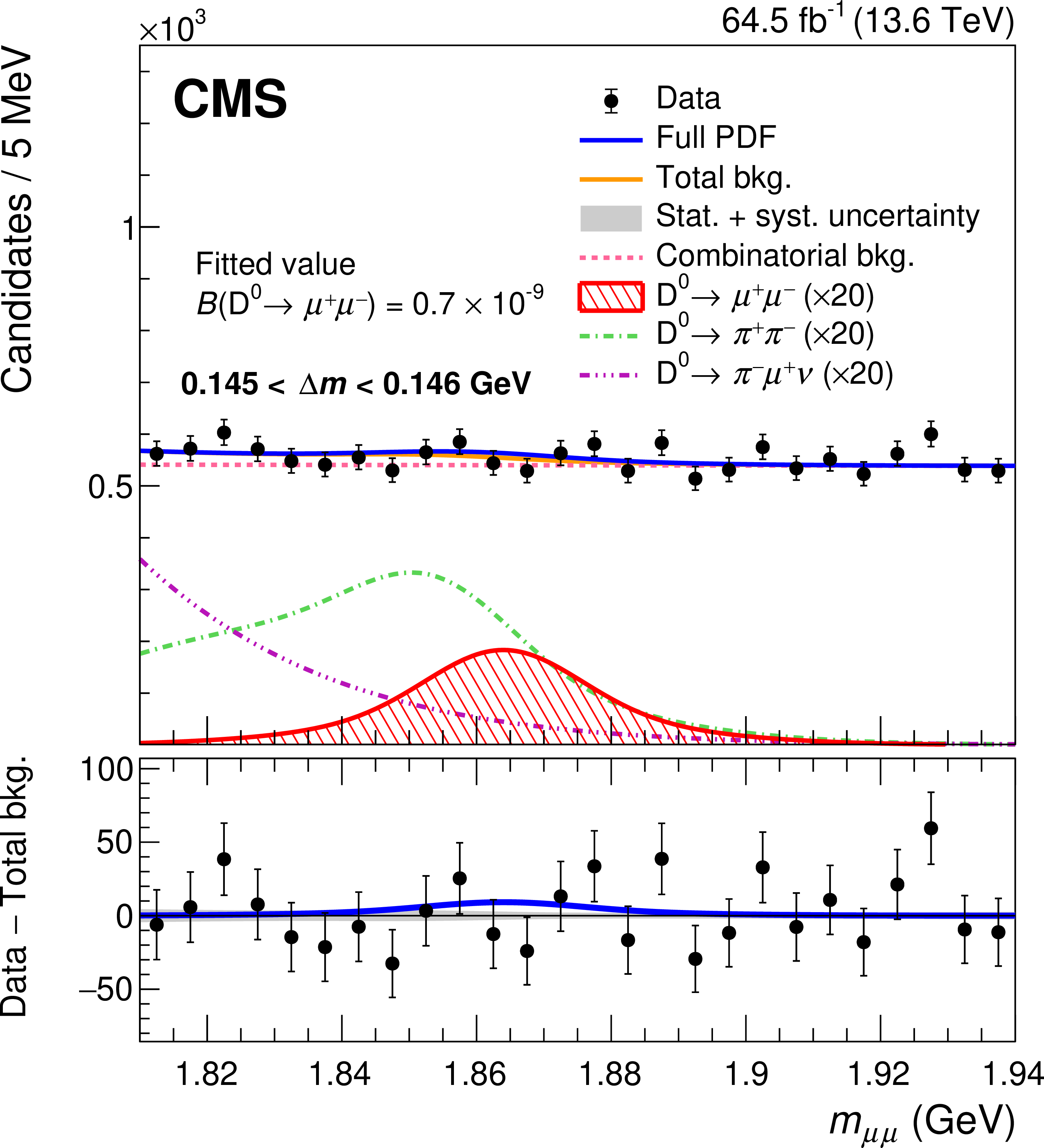
June 16th, 2025
CMS-BPH-23-008
| A search for the rare decay D0→μ+μ- is reported using proton-proton collision events at √s = 13.6 TeV collected by the CMS detector in 2022-2023, corresponding to an integrated luminosity of 64.5 fb-1. This is the first analysis to use a newly developed inclusive dimuon trigger, expanding the scope of the CMS flavor physics program. The search uses D0 mesons obtained from D*+→ D0π+ decays. No significant excess is observed. A limit on the branching fraction of B(D0→μ+μ- ) < 2.4 x 10-9 at 95% confidence level is set. This is the most stringent upper limit set on any flavor changing neutral current decay in the charm sector. |  |
CMS-BPH-24-002
The traditional quark model accounts for the existence of baryons, such as protons and neutrons, which consist of three quarks, as well as mesons, composed of a quark-antiquark pair. Only recently has substantial evidence started to accumulate for exotic states composed of four or five quarks and antiquarks. The exact nature of their internal structure remains uncertain. This paper reports the first measurement of quantum numbers of the recently discovered family of three all-charm tetraquarks, using data collected by the CMS experiment at the Large Hadron Collider from 2016 to 2018. The angular analysis techniques developed for the discovery and characterization of the Higgs boson have been applied to the new exotic states. The quantum numbers for parity P and charge conjugation C symmetries are found to be +1. The spin J of these exotic states is consistent with 2ℏ, while 0ℏ and 1ℏ are excluded at 95% and 99% confidence level, respectively. The JPC=2++ assignment implies particular configurations of constituent spins and orbital angular momenta, which constrain the possible internal structure of these tetraquarks.
CMS-BPH-24-002

Candidates for all-charm tetraquarks. The J/ψJ/ψ→μ+μ−μ+μ− invariant mass m4μ spectrum shows the three exotic states, X(6600), X(6900), and X(7100). Parameterizations of these states are displayed both individually and as a combined signal that includes quantum-mechanical interference (denoted by “Signal”). The full model incorporates both signal and background components, with the background originating from di-J/ψJ/ψ production, including contributions from nonresonant production and an enhancement near the kinematic threshold of 6.2 GeV.
CMS-BPH-24-002
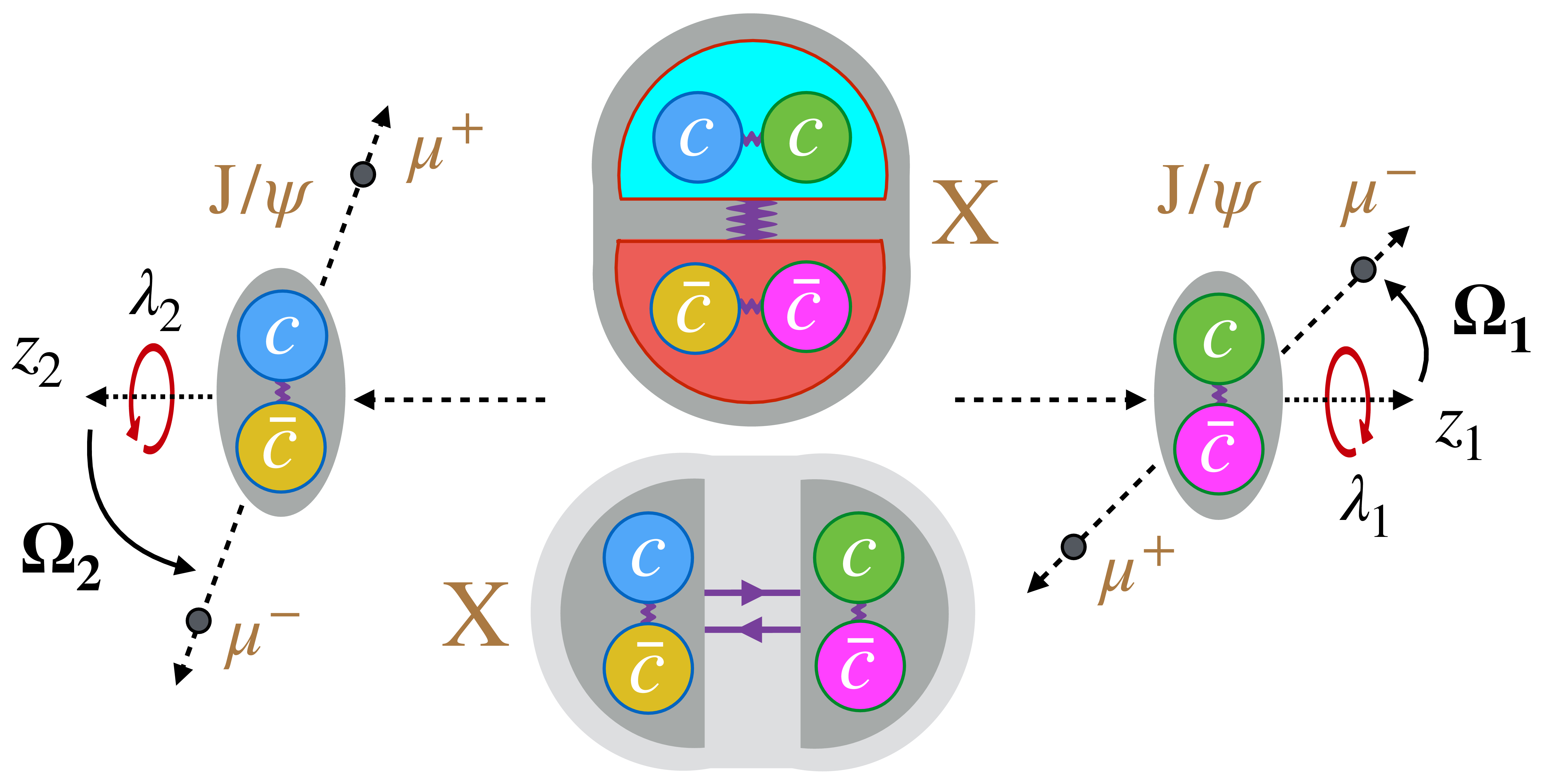

CMS-MLG-23-003
A novel solution is presented for the problem of estimating the backgrounds of a signal search using observed data while simultaneously maximizing the sensitivity of the search to the signal. The “ABCD method” provides a reliable framework for background estimation by partitioning events into one signal-enhanced region (A) and three background-enhanced control regions (B, C, and D) via two statistically independent variables. In practice, even slight correlations between the two variables can significantly undermine the method's performance. Thus, choosing appropriate variables by hand can present a formidable challenge, especially when background and signal differ only subtly. To address this issue, the ABCD with distance correlation (ABCDisCo) method was developed to construct two artificial variables from the output scores of a neural network trained to maximize signal-background discrimination while minimizing correlations using the distance correlation measure. However, relying solely on minimizing the distance correlation can yield undesirable characteristics in the resulting distributions, which may compromise the validity of the background prediction obtained using this method. The ABCDisCo training enhanced with closure (ABCDisCoTEC) method is introduced to solve this issue by directly minimizing the nonclosure, expressed as a dedicated differentiable loss term. This extended method is applied to a data set of proton-proton collisions at a center-of-mass energy of 13 TeV recorded by the CMS detector at the CERN LHC. Additionally, given the complexity of the minimization problem with constraints on multiple loss terms, the modified differential method of multipliers is applied and shown to greatly improve the stability and robustness of the ABCDisCoTEC method, compared to grid search hyperparameter optimization procedures.
CMS-SUS-23-001
Several new physics models including versions of supersymmetry (SUSY) characterized by R-parity violation (RPV) or with additional hidden sectors predict the production of events with top quarks, low missing transverse momentum, and many additional quarks or gluons. The results of a search for top squarks decaying to two top quarks and six additional light-flavor quarks or gluons are reported. The search employs a novel machine learning method for background estimation from control samples in data using decorrelated discriminators. The search is performed using events with 0, 1, or 2 electrons or muons in conjunction with at least six jets. No requirement is placed on the magnitude of the missing transverse momentum. The result is based on a sample of proton-proton collisions at √s = 13 TeV corresponding to 138 fb−1 of integrated luminosity collected with the CMS detector at the LHC in 2016-2018. The data are used to determine upper limits on the top squark pair production cross section in the frameworks of RPV and stealth SUSY. Models with top squark masses less than 700 (930) GeV are excluded at 95% confidence level for RPV (stealth) SUSY scenarios.
CMS-SUS-23-001
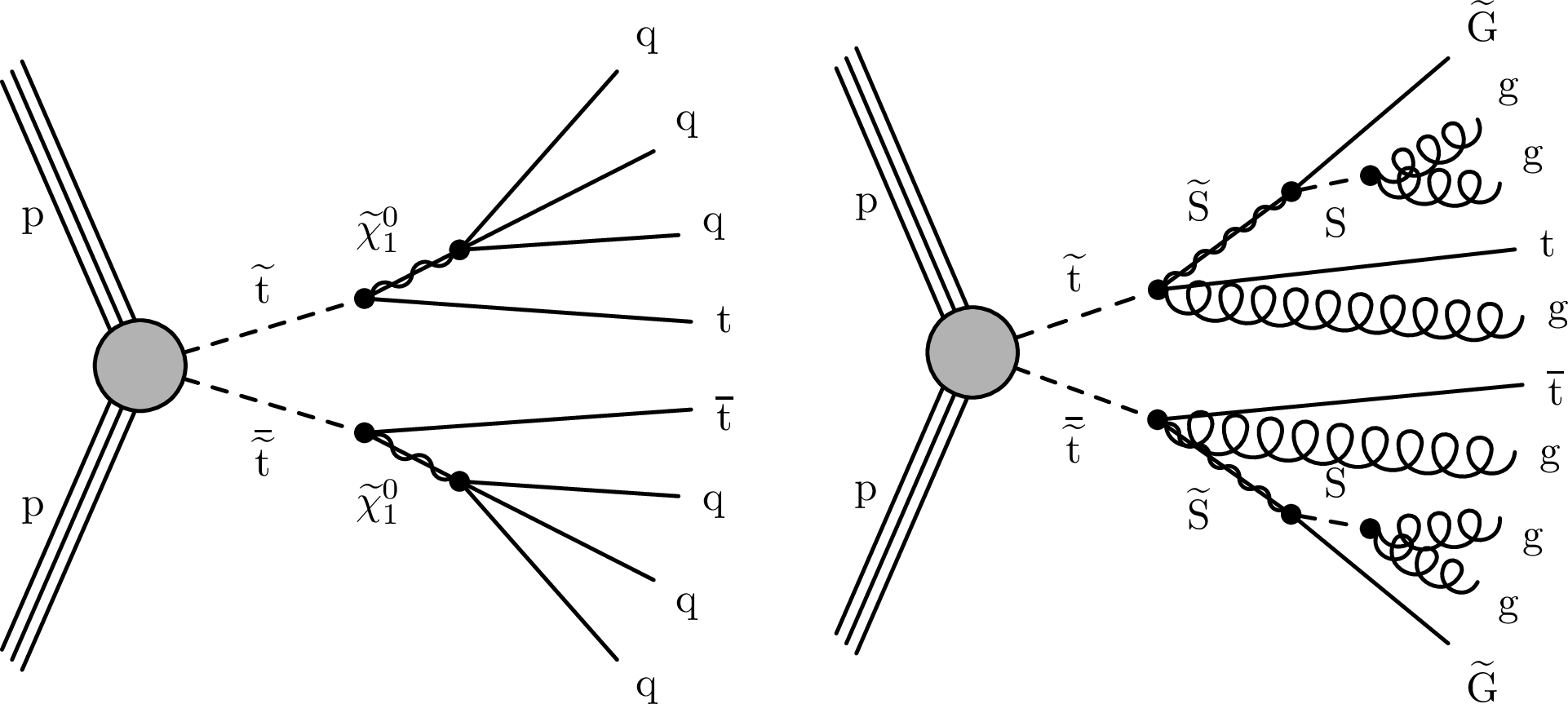
CMS-SUS-23-001
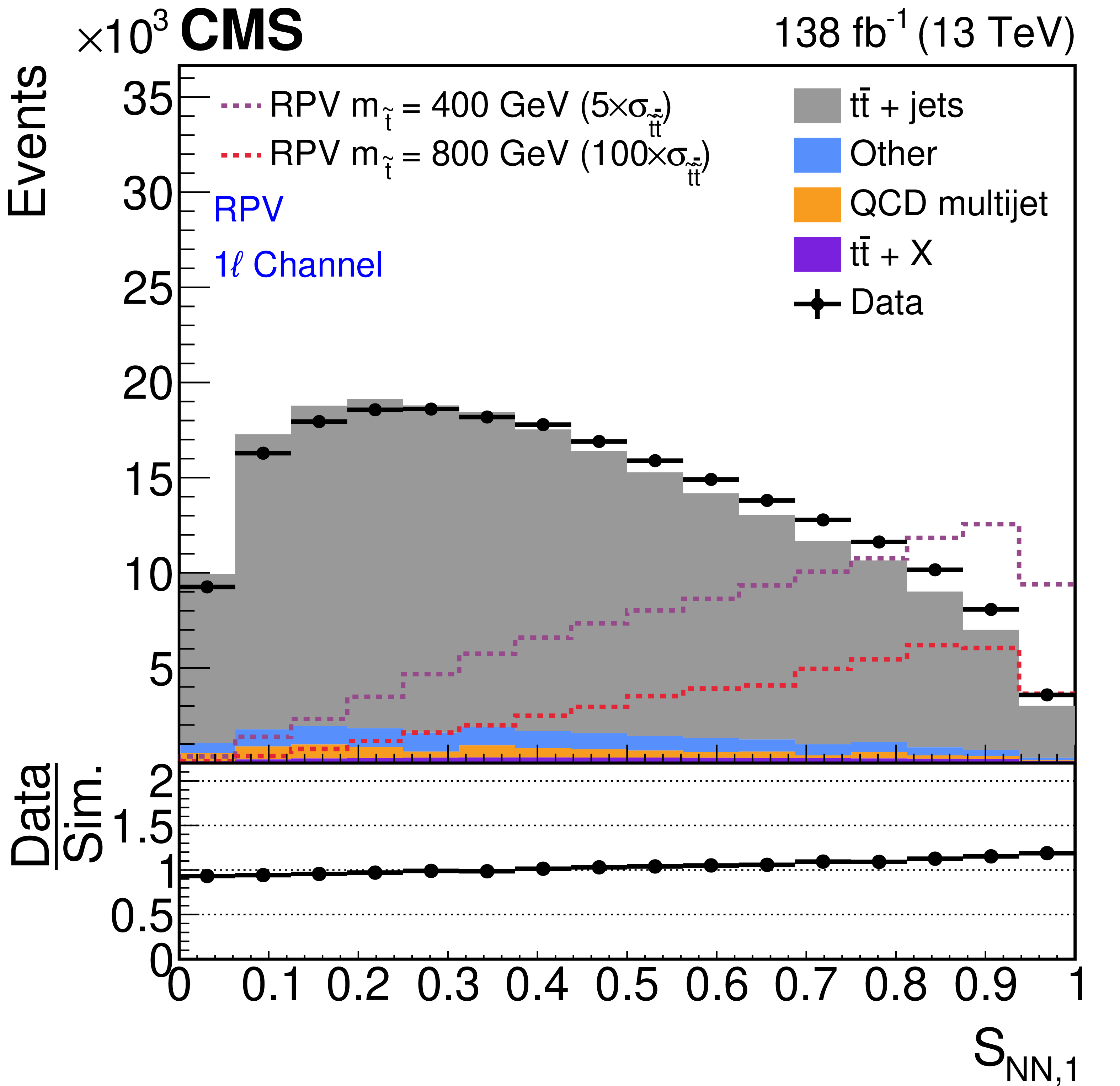
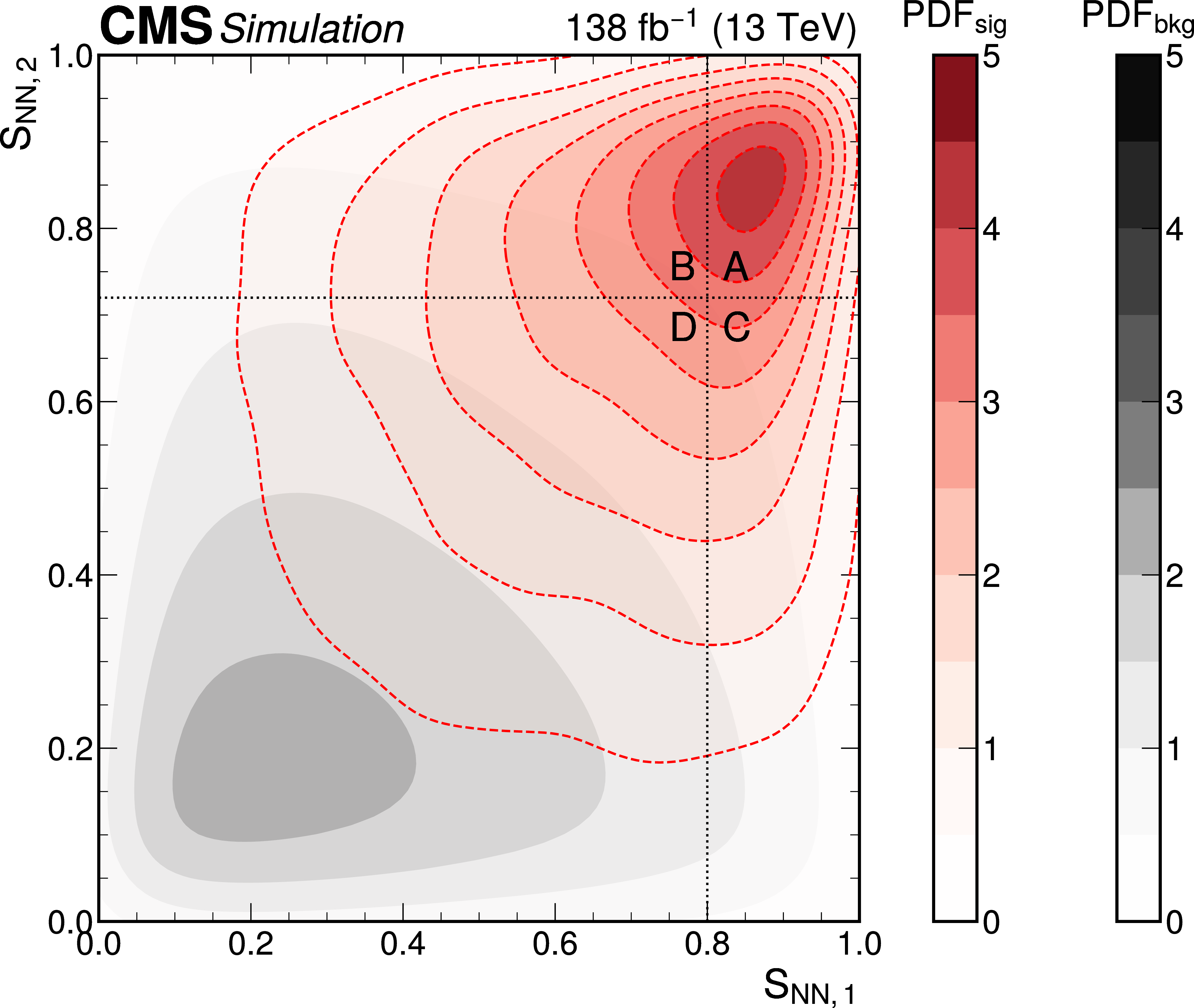
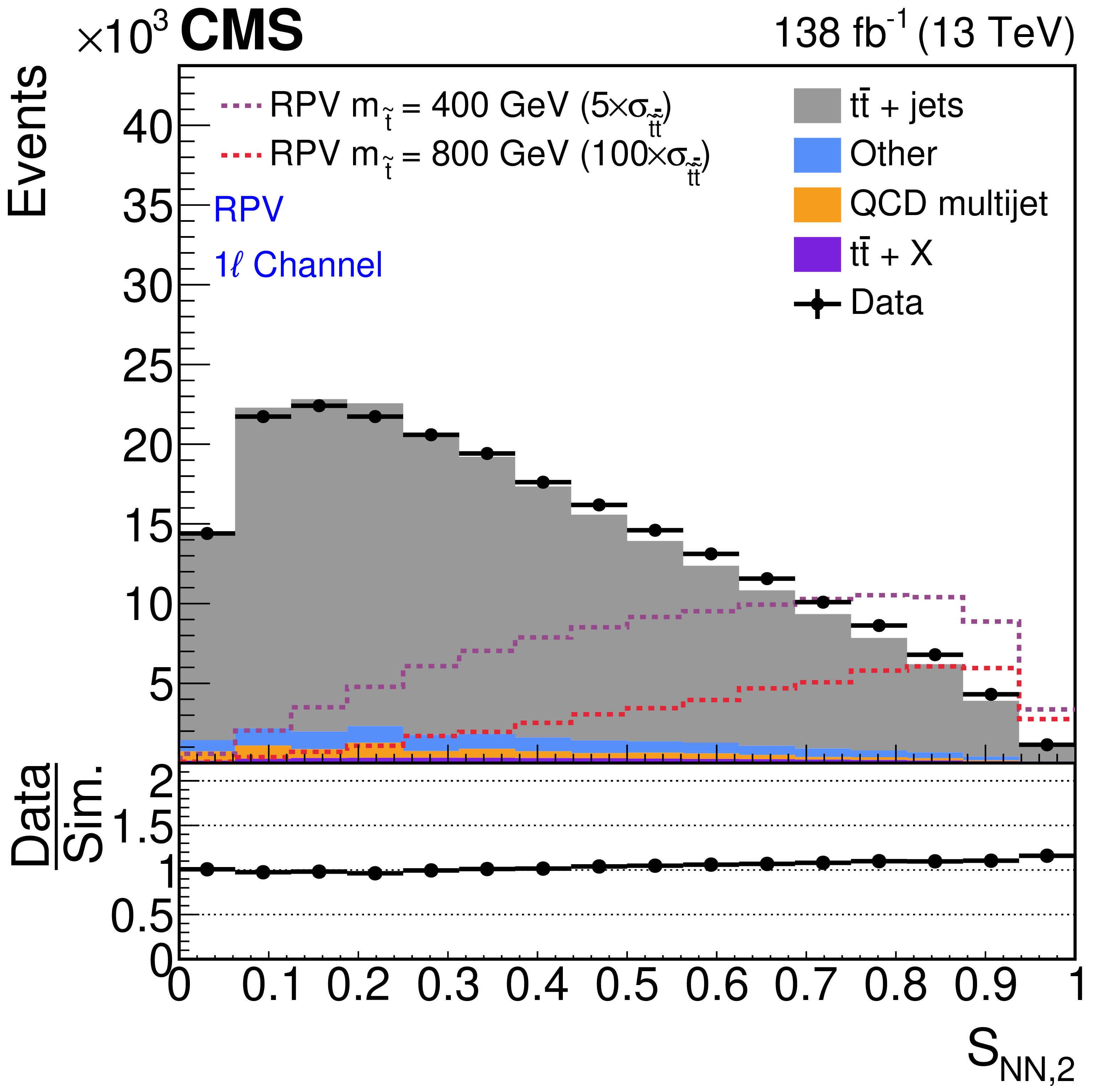
CMS-SUS-23-001
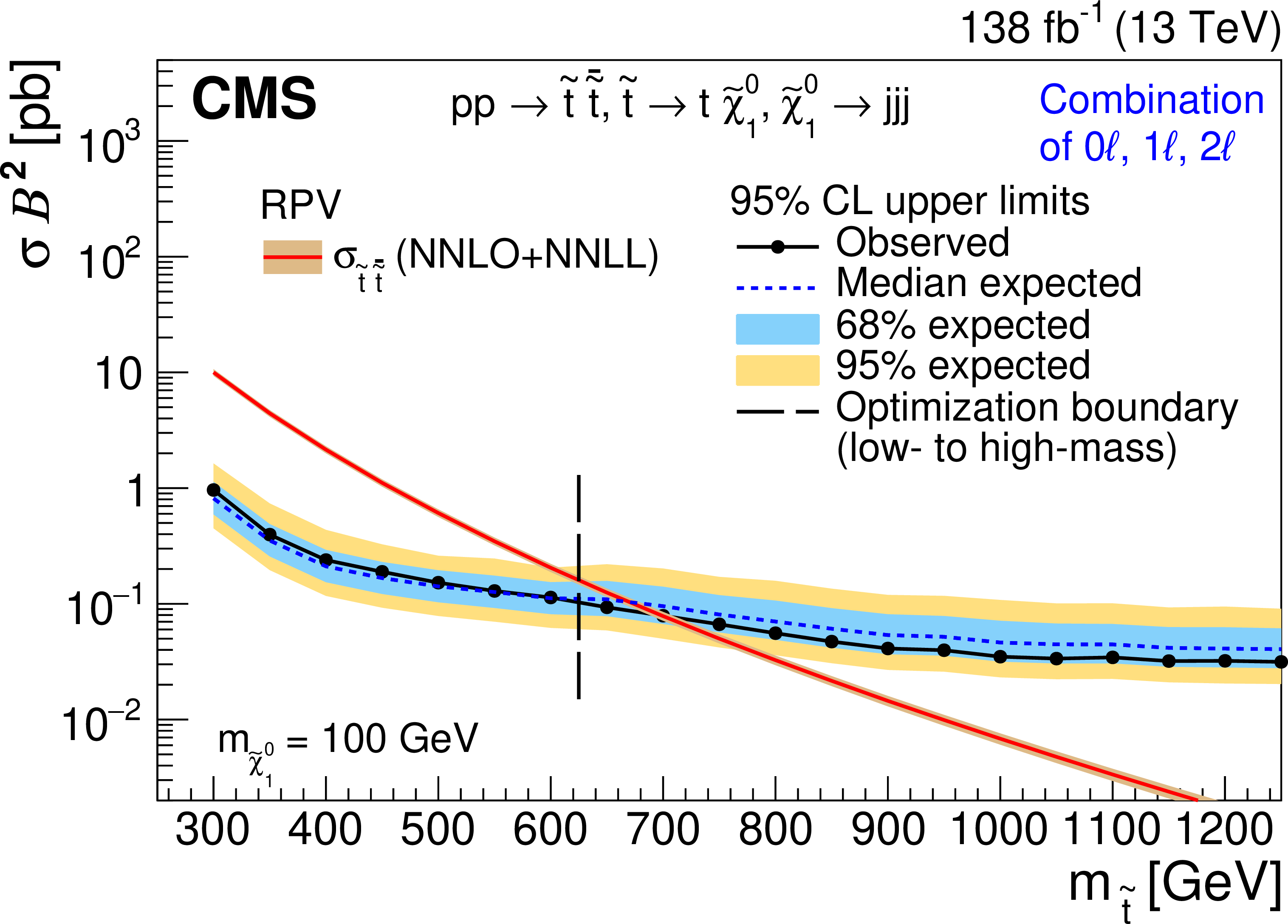
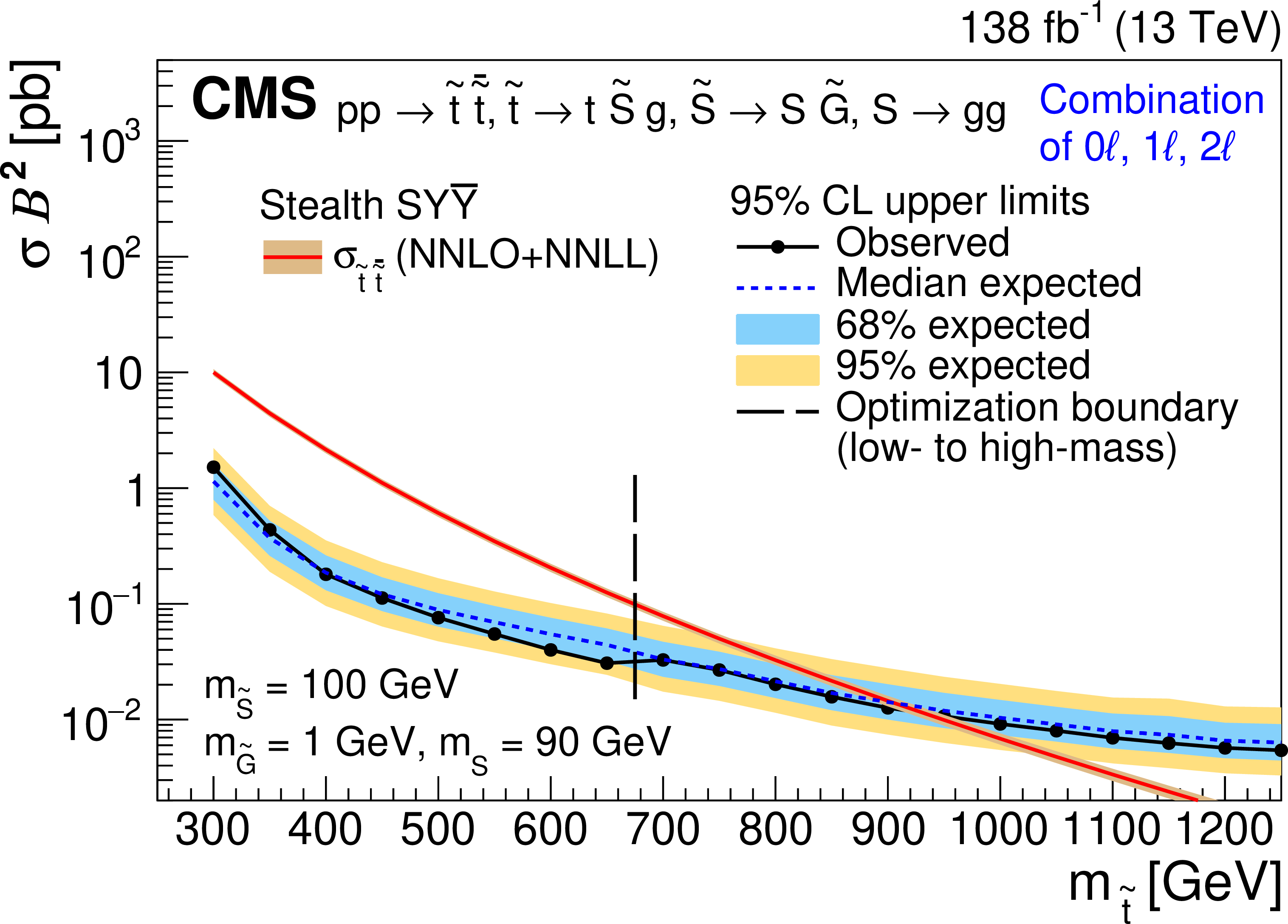
A. Yaouanc, F. Richard
Due to the large QCD background, the tt spectroscopy is poorly doing at LHC with the exception of a toponium type candidate observed with high statistical significance by CMS. Our previous work offers an alternate interpretation of this narrow resonance as a Kaluza Klein graviton. For heavy scalars, following ATLAS, we describe how the top loop contribution to the gluon-gluon fusion mechanisms could produce a dip rather than a bump in the mass distribution, which further complicates searches for scalar resonances. It seems that A(420) and H(650) resonances, indicated by other channels, as described in our previous work, start to be visible in the tt channel in RUN2 analyses presented by ATLAS and CMS. An NMSSM interpretation does not seem excluded, although the mass difference between these two resonances comes as a surprise. The KK graviton scenario is updated from our previous work, already offering promising discoveries at RUN3. This scenario also offers excellent prospects for producing new narrow resonances at future e+e- colliders. The present note summarizes these arguments and describes available indications, complementing our collection of evidences for BSM resonances in view of electing a future collider.
BESIII Collab.

BESIII Collab.
